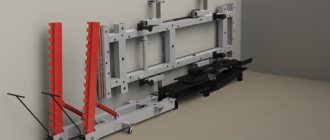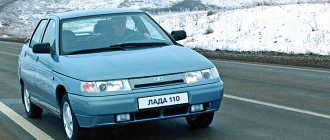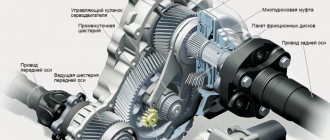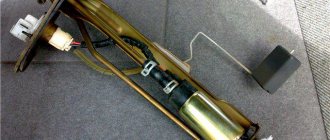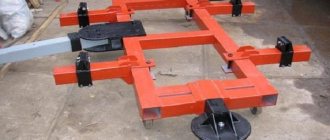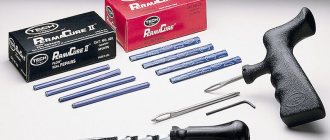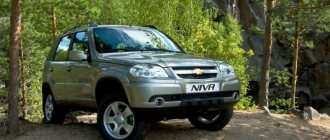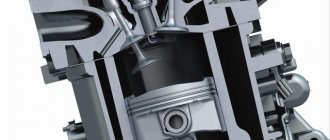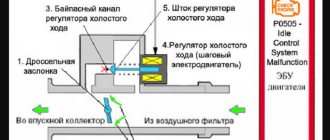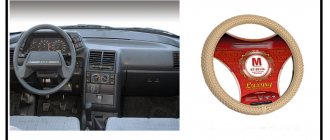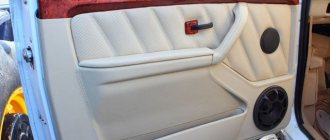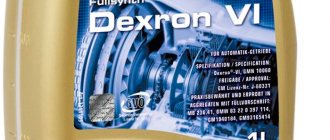A driveshaft is a unit that directly transmits torque (rotation energy) to the wheels. Beginners sometimes confuse the concepts of “propeller shaft” and “universal drive”. To prevent this from happening, it is important to learn the following things:
- The cardan shaft has two support points; there are no intermediate supports.
- A driveline drive may have multiple supports and includes multiple driveshafts.
Cardan shafts are easy to find in passenger vehicles (all-wheel drive and rear-wheel drive cars), light trucks, buses, dump trucks, trucks, truck cranes, loaders, tractors, ATVs. But driveshafts are unpopular among front-wheel drive cars. It is difficult to achieve synchronous rotation of the shafts. An exception is vehicles with a HF with a CV joint.
What is a cardan shaft
The cardan is a mechanism that transmits rotation from the gearbox to the rear axle gearbox. The task is complicated by the fact that these two mechanisms are located in different planes relative to each other. All car models whose rear wheels are driven are equipped with cardans.
The transmission driveshaft is installed along the vehicle's exhaust system and looks like a long beam running from the gearbox to the rear axle. It is equipped with at least two cross joints (one on each side), and in units with a slight offset of the axes - one.
A similar transmission is also used in the steering system of a car. The hinge connects the steering column with the steering mechanism located in a different plane.
In agricultural machinery, such a device is used to connect additional equipment to the tractor power take-off shaft.
From the history of the creation and use of the cardan
As most motorists know, only rear-wheel drive and all-wheel drive car models are equipped with a driveshaft. Vehicles with front drive wheels simply do not need this part of the transmission. In this case, torque is transmitted directly from the gearbox to the front wheels. a separate detailed review on why it is needed in a car and how it works ).
The world first learned about the principle of cardan transmission from the Italian mathematician, engineer and doctor Girolamo Cardano in the 16th century. The device named after him came into use at the end of the 19th century. One of the first auto developers to use this technology was Louis Renault.
Renault cars equipped with a cardan drive have a more efficient transmission. It eliminated torque dips in the process of transmitting it to the rear wheels when the vehicle encountered an unstable road. Thanks to this modification to the transmission, the cars became smoother while driving (without jerking).
Over the decades of vehicle modernization, the cardan drive principle has remained intact. As for the design of such a transmission, depending on the car model, it can differ greatly from related analogues.
Cardan shaft device
The cardan mechanism includes the following elements.
1. Central shaft. It is made of hollow steel pipe. The void is necessary to facilitate the structure. On one side of the pipe there are internal or external slots. They are necessary to install the sliding fork. A hinge fork is welded on the other side of the pipe.
2. Intermediate shaft. Multi-section modifications of cardans use one or more of these elements. They are installed on rear-wheel drive cars to eliminate vibration that occurs when a long pipe rotates at high speeds. Fixed hinge forks are attached to them on both sides. Sports cars use single-section universal joints.
3. Cross. This is a hinge element with tips, inside of which there is a needle bearing. The part is installed in the fork eyes. It transmits rotation from the drive fork to the driven fork. Additionally, they ensure unhindered rotation of two shafts, the angle of inclination of which does not exceed 20 degrees. If the difference is greater, another intermediate section is installed.
4. Suspension bearing. It is mounted in the mount of the additional section. This part fixes and stabilizes the rotation of the intermediate shaft. The number of these bearings is identical to the number of intermediate sections.
5. Sliding fork. It is inserted into the central shaft. When the car is moving, the distance between the axle and the gearbox is constantly changing due to the operation of the shock absorbers. If you fix the pipe tightly, at the very first bump you will need to change some unit (the one that will be weakest). This could be a broken shaft mount or failure of bridge parts. The sliding fork is equipped with splines. Depending on the modification, it is either inserted into the central shaft (corresponding grooves are made inside it) or placed on top of the pipe. Splines and grooves are needed for the pipe to rotate the hinge.
6. Hinge forks. They connect the central shaft to the intermediate shaft. The fork-flange has a similar shape, only it is installed at the place where the entire mechanism is attached at the front to the gearbox, and at the rear to the axle gearbox.
7. Elastic coupling. This part softens the impacts of the cardan when it moves while driving. It is installed between the flange of the output shaft of the box and the fork flange of the central cardan shaft.
How to check your work
You can check your work immediately after replacing the crosspiece and installing the cardan on the car. The verification process includes the same manipulations as when searching for cross play. The cardan should also be inspected for oil or grease leaks. Pay special attention to the seals. The second stage of testing is testing in motion. During a test drive, you can immediately hear vibration, noise or beating of the cardan.
The job of replacing the universal joint is complete, and you did it yourself, spending money only on spare parts. In addition, you have completely removed and installed the cardan, now if any unit of the cardan fails, it will not be difficult for you to replace it.
Source
What function does it perform?
The main task of this mechanism is to transmit rotational movements to axes located in different planes. The gearbox is located higher than the rear wheel axle of the car. If you install a straight beam, due to the displacement of the axes, it will either break itself or break the frame and bridge assemblies.
Another reason why this device is needed is the mobility of the rear axle of the machine. It is mounted on shock absorbers, which move up and down while driving. In this case, the distance between the gearbox and the rear gearbox is constantly changing. The sliding fork compensates for such differences without losing torque.
Types of driveshafts
Basically, most motorists associate the concept of a cardan transmission with the operation of the transmission of rear-wheel drive cars. In fact, it is used not only in this part of the car. The steering and some other mechanisms operate on a similar principle, which are connected to neighboring ones at different angles.
There are 4 types of gears:
- asynchronous;
- synchronous;
- semi-cardan flexible;
- semi-cardan rigid.
The most famous type of cardan transmission is asynchronous. The main application is in transmission. It is also called a transmission with an unequal velocity joint. This mechanism consists of two forks, which are connected by a cross at a right angle. Needle bearing lugs allow the spider to move smoothly with the position of the forks themselves.
This hinge has one feature. It transmits uneven torque. That is, the rotation speed of the connected shafts periodically differs (for a full revolution, the secondary shaft twice overtakes and lags behind the main one twice). To compensate for this difference, another hinge is used (on the opposite side of the pipe).
How asynchronous transfer works is shown in the video:
Operation of the cardan shaft. Work propeller shaft.
The synchronous transmission is equipped with a CV joint. Owners of cars with front-wheel drive are familiar with this device. The constant velocity joint connects the differential to the front wheel hub. Sometimes they are equipped with transmissions of more expensive all-wheel drive cars. Compared to the previous type, synchronous transmission is less noisy, but more expensive to maintain. The CV joint ensures the same rotation speed of two shafts with an inclination angle of up to 20 degrees.
The flexible semi-cardan transmission is designed to rotate two shafts, the angle of inclination of which does not exceed 12 degrees.
In the modern automotive industry, rigid half-unit drives are rarely used. In it, the hinge transmits torque when the angle of inclination of the shafts is shifted by up to two percent.
There are also closed and open types of cardan drives. They differ in that the first type of universal joints are placed in a pipe and often consist of a single joint (used in trucks)
Design and purpose of the cardan cross
The cardan serves to connect the gearbox and the rear (in a rear-wheel drive car) or front (in all-wheel drive) axle. Its task is to transmit rotation from the engine to the bridge or bridges. The connection point for these elements is the hinge, the main part of which is the cross. It has the shape of a cross, at the ends of which there are cups with needle bearings. The bearing is separated from the housing by a sealing ring made of rubber or plastic. For each car model, the dimensions of the crosspieces differ from each other.
This is interesting: What is the fuse for the brake light of the VAZ 2110
Checking the condition of the cardan shaft
The cardan should be checked in the following cases:
- additional noise appears during acceleration;
- an oil leak appeared near the gearbox;
- knocking sound when shifting into gear;
- At speed, you feel increased vibration transmitted to the body.
Diagnostics must be carried out by raising the car on a lift or using jacks (see how to choose the appropriate modification in a separate article). It is important that the drive wheels can rotate freely.
Here are the nodes you should check.
- Fastening. The intermediate support and flange connections must be tightened using a bolt and washer. If it is missing, the nut will loosen, resulting in play and excessive vibration.
- Elastic coupling. It often fails, since the rubber part compensates for axial, radial and angular displacements of the parts being connected. You can check for a malfunction by slowly turning the central shaft (in the direction of rotation and back). The rubber part of the coupling should not be torn or play at the place where the bolts are attached.
- Sliding fork. Free transverse movement in this unit appears due to natural wear of the spline joint. If you try to rotate the shaft and coupling in the opposite direction, and there is a slight play between the fork and the shaft, then this unit needs to be replaced.
- A similar procedure is carried out with hinges. A large screwdriver is inserted between the fork lugs. It plays the role of a lever with which they try to turn the shaft in one direction or the other. If there is play when swinging, the crosspiece needs to be replaced.
- Suspension bearing. Its serviceability can be checked by taking the shaft in front of it with one hand, and behind it with the other, and shaking it in different directions. In this case, the intermediate support must be firmly fixed. If play in the bearing is noticeable, the problem is solved by replacing it.
- Balancing. It is performed if the diagnostics do not reveal any malfunctions. This procedure is performed on a special stand.
Here is another video that shows how to check the driveshaft mechanism:
Suspicious sounds in the area of the cardan, vibration, etc.
Drive shaft maintenance
According to manufacturers' recommendations, the cardan is serviced after 5 thousand kilometers. In this case, it is necessary to check the elastic coupling and crosspieces. If necessary, worn parts are replaced with new ones. The sliding fork splines are lubricated.
If the car has a cardan with serviceable crosspieces, they also need to be lubricated. This modification is determined by the presence of a grease fitting in the cardan crosspieces (hole for connecting an oil syringe).
Frequent malfunctions and their elimination
All malfunctions can be divided according to emerging signs of failure:
- Vibration when moving - the bearings of the cross or the sliding sleeve are worn out, the balancing of the shaft is disrupted;
- Knocks when starting - the sliding joint splines are worn out, the fastening bolts are loose;
- Oil leakage from the bearings means wear of the seals.
To eliminate the problems described above, the “cardans” are dismantled and defective, and faulty parts are replaced. If there is an imbalance, the shaft must be balanced under dynamic conditions.
Malfunctions of cardan shafts
Since this mechanism is in constant motion and experiences heavy loads, malfunctions occur quite often. Here are the most common ones.
- There is oil on the cardan shaft. It is necessary to pay attention to the gearbox seals. They need to be replaced periodically due to normal wear and tear. Elastic seals lose their properties over time and small gaps appear between the shaft and the oil seal. If a leak appears in the area of the sliding fork, you need to check the condition of the splines. If they have roughness, the fork must be replaced.
- Shocks during loads on the cardan are caused by play in the connections. If free play appears in the crosspieces or in the bearing of the suspension mount, then these parts are replaced with new ones. Vibration may occur due to a loose bolted connection. If this problem occurs frequently, you should check whether a grower is installed between the nut and the mount. This washer prevents the nut from unscrewing due to constant vibration.
- Creaks when pressing the accelerator pedal. The hinges need to be checked. Due to constant contact with moisture and dirt, the crosspiece may fail. If you ignore the squeaks, the crosspiece will jam and the hinge will break.
- The most common problem with a driveshaft is vibration. But before you start repairing the mechanism, you should first check the chassis. Impaired wheel balancing also leads to vibration at high speeds. If this effect disappears when switching to another gear, then the cardan has nothing to do with it. Here are the reasons why vibration may occur in the cardan:
- malfunction of the balancing rings (corrosion or breakage);
- destruction of crosspieces;
- damage to the central or intermediate shaft (deformation of the pipe leads to imbalance of the mechanism);
- incorrectly assembled mechanism components.
Oil leak
A special grease material is used to lubricate the hinges. Typically, for CV joints, needle-type bearings, and spline joints, an individual lubricant is used that has the required characteristics.
To prevent dirt from getting into the cavity of the rubbing or rotating elements, they are protected by anthers and seals. But in the case of parts located under the bottom of the car, such protection is only temporary. The reason is that protective covers are constantly in the zone of active aggressive influence of moisture, dust, and in winter also chemical reagents that are sprinkled on the road.
If the car often travels over rough terrain, then there is an additional risk of damaging such protection with a stone or branch. As a result of damage, the aggressive environment begins to affect rotating and longitudinally moving parts. Since the driveshaft constantly rotates while the vehicle is moving, the lubricant in it heats up, and as the seals wear out, it can leak out, which will eventually lead to breakdown of this part of the transmission.
Vibration during acceleration and knocking in the gearbox
This is the first sign by which a driveshaft failure is determined. With slight wear, rotating elements spread throughout the body, resulting in an unpleasant hum in the car while driving. True, for some car models this acoustic effect is a completely natural factor by which the presence of a driveshaft in the transmission is determined. This is especially true for some older domestic cars.
Creaking noise during acceleration
The wear of the crosspieces is determined by the squeak that appears when the vehicle accelerates. Moreover, this sound does not disappear, but rather intensifies as the car accelerates.
The creaking noise in this part comes from the needle bearing rollers. Since they are least protected from the aggressive effects of moisture, over time the bearing loses lubrication and the needles begin to rust. When the car accelerates, they become very hot, expand, begin to vibrate and make a strong squeak.
Due to the high torque, the crosspiece experiences heavy loads. And the crankshaft revolutions are not synchronous with the speed of rotation of the car’s wheels. Therefore, squeaking can occur regardless of vehicle speed.
Outboard bearing problems
As we learned from the subtopic regarding the design of the propeller shaft, a suspension bearing is a regular bearing with round rollers enclosed in a socket. To prevent the device from malfunctioning due to constant exposure to dust, moisture and dirt, the rollers are protected with plastic covers, and there is a thick lubricant inside. The bearing itself is fixed under the bottom of the car, and a cardan pipe passes through the central part.
To prevent vibrations from the rotating pipe from being transmitted to the body, a rubber coupling is installed between the outer race and the bearing mounting bracket. It acts as a damper, minimizing the acoustic effect during operation of the cardan transmission.
Although the bearing is closed and has grease pumped into it, which cannot be added or replaced in any way (it is filled at the factory during the manufacturing process of the part), the cavity between the sockets is not sealed. For this reason, over time, no matter what conditions the car is operated in, dust and moisture get inside the bearing. Because of this, wear occurs between the rollers and the loaded part of the socket.
Due to lack of lubrication (it gradually ages and is washed out), rust may appear on the bearing rollers. Over time, the ball, severely damaged by corrosion, crumbles, which is why a large number of foreign solid particles appear inside the bearing, destroying other elements of the part.
Typically, when a bearing breaks down like this, a howling and humming sound appears. This element requires replacement. Under the influence of moisture and aggressive chemicals, the rubber coupling ages, loses its elasticity, and subsequently falls apart due to constant vibrations. In this case, the driver will hear distinct strong knocks transmitted to the body. It's not worth driving with such damage. Even if the driver is willing to put up with a lot of noise in the cabin, the driveshaft can suffer greatly due to the large displacement. Moreover, it is impossible to predict which of its parts will break first.
Consequences of improper operation of the cardan
As we have already noted, problems with the cardan are primarily recognized by increasing noise and significant vibrations coming to the body while the vehicle is moving.
If the driver has iron nerves and incredible calm, then ignoring vibrations and loud noise due to a worn driveshaft will certainly lead to unpleasant consequences. The worst thing that can happen is the shaft breaks while driving. This is especially dangerous and always leads to accidents when the shaft breaks in the front of the car.
If signs of a cardan problem appear while driving, the driver needs to reduce speed and stop the vehicle as soon as possible. Having marked the place where the car is stopped, it is necessary to carry out a visual diagnosis of the car. Here's what you need to pay attention to:
- For all bolted connections;
- On the condition of the outboard bearing, especially on its rubber damper;
- On the condition of the flanges;
- On the crosspieces;
- On the bearing caps.
It is not recommended to disassemble the shaft yourself, either on the road (to replace a broken part) or in a garage, if the car owner does not have the appropriate skills. Repair of the cardan must always be accompanied by its balancing, which is impossible to do in road repair conditions.
For these reasons, the condition of this part of the transmission must be monitored. Scheduled technical inspection and, if necessary, repairs are the key to proper and safe operation of any vehicle system and its components, including the driveshaft.
Advantages and disadvantages
Due to their relatively simple design, cardan shafts are extremely durable. They are indispensable in cars that must be used in off-road conditions. One of the most durable (taking into account the loads) elements of a car in general - the cross - is part of the driveshaft. However, with survivability and the ability to withstand enormous loads come some disadvantages. It is easy to trace an analogy here with some other components of vehicles, which, due to certain circumstances, have not become more complex over time and the emergence of new technical solutions.
The main and, perhaps, the only disadvantage of the cardan shaft is its large mass and dimensions . All other shortcomings stem from this. For example, cardan shafts of KamAZ trucks can weigh from 19.8 to 45 kilograms . The shaft alone significantly increases the curb weight of the vehicle, which affects the dynamic characteristics and fuel consumption. It should be noted that for the installation of the shaft it is necessary to allocate a tunnel under the bottom of the car. In the case of trucks, this is not so significant, but in small cars, due to the presence of a driveshaft, the geometry of the rear compartment changes. In addition, the rotating shaft becomes a source of vibration and noise, which, however, will not become a problem if the driver installs vibration and noise insulation materials.
Removing and installing the propeller shaft
If there is a need to replace the cardan mechanism or repair its unit, it will need to be removed. The procedure is carried out in the following sequence:
- the mounting bolts are unscrewed from the flanges of the rear axle and the driveshaft;
- the shaft goes down;
- the bolts of the rubber coupling are unscrewed;
- the cardan moves away from the gearbox;
- The hanging mount is unscrewed.
The repaired or new mechanism is installed in the reverse order: suspension, coupling, bridge flanges.
The additional video mentions some more subtleties of removing and installing the cardan:
Patriot driveshaft | removal and installation | flange replacement
The cardan in a car is a fairly durable mechanism, but it also needs periodic maintenance. The driver needs to be attentive to the appearance of extraneous sounds and vibrations. Ignoring these problems will result in the breakdown of important transmission components.
Conclusion
A cardan shaft is a seemingly simple product with which problems often arise. Despite the high durability of such shafts, they require periodic inspection and maintenance. Due to its long service life, a car enthusiast can even purchase a used one. driveshaft, however, a new product must be checked very carefully. There are also new cardans on sale - they are produced both at domestic and foreign factories. Despite the fact that original cardans are the most reliable, many consider their cost to be inadequate. You can buy a non-original cardan shaft, but it is difficult to give any recommendations on manufacturers - the quality of products from almost all companies working on the aftermarket cardan shafts is approximately the same.
Finding a new driveshaft
If there is a need to completely replace the driveshaft, then finding a new part is a simple procedure. The main thing is that you have enough money for it, since this is a fairly expensive part in the transmission of some car models.
To do this, you can use auto dismantling services. But in this case, you need to be sure that the company selling used parts is trustworthy and does not sell low-quality products. In some areas there are companies that remanufacture parts that need to be completely replaced and sell them at an affordable price, but after a short period of time these parts fail.
It is much safer to search through the catalog of an online store or at a physical point of sale - an auto parts store. In this case, you need to search for a spare part using the exact data of the car (make, model, production date, etc.). If some information about the car is not available, then all the necessary data can always be found by the VIN code. Where it is located in the car, as well as what information about the vehicle it contains, is described in a separate article .
If the part number is known (the marking on it, if it has not disappeared during operation), then a search for a new analogue in the catalog can be performed using this information. If you purchase components at a disassembly site, before purchasing you need to pay attention to:
- Condition of fastening points. Deformations, even minor ones, are a reason why the part is not worth purchasing. This is especially true for such cardan shafts, the design of which does not provide for the installation of a flange;
- Condition of the shafts. Although this parameter is difficult to check visually, even minor deformations (including lack of balancing) will lead to severe vibration of the shaft, and subsequent failure of the device;
- Condition of the spline connection. Corrosion, burrs, notches and other damage can seriously affect the performance of the driveline;
- The condition of the outboard bearing, including the elasticity of the damper part.
Regardless of whether the universal joint looks serviceable during disassembly or not, it needs to be shown to a specialist. A professional will immediately recognize whether the cardan has been disassembled or not. In the event of repair work on this unit, a specialist will be able to tell whether the structure was assembled correctly.
And one more important point. Even when purchasing a used product, it is worth considering those products that are covered by a warranty (either from the manufacturer or the seller).
